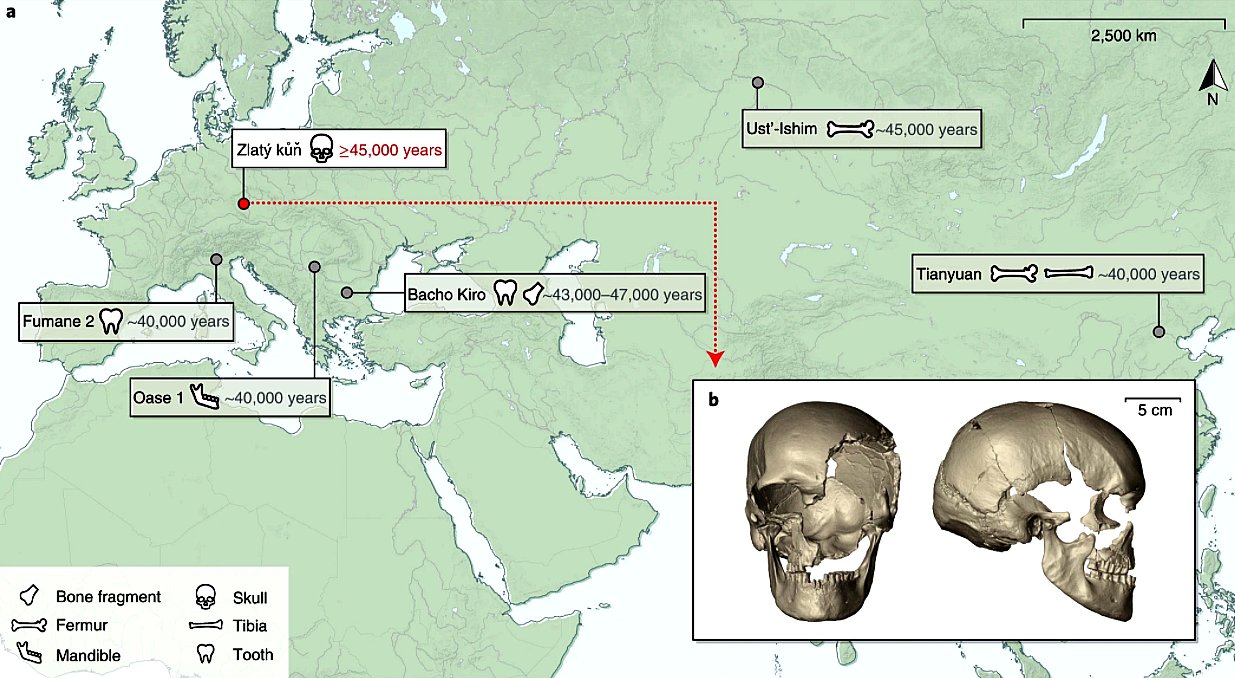More interbreeding between Neanderthals and modern humans
Modern humans supposedly arrived in Europe around 45 thousand years ago (ka). Evolutionists believe Neanderthals disappeared by about 40 ka, leaving a few thousand years when both modern humans and Neanderthals lived in Europe at the same time. Two recent papers presented genomic analysis of some of the allegedly earliest modern humans in Europe. Hajdinjak et al. presented data from three individuals from Bacho Kiro Cave, Bulgaria (dated to between 45.93 and 42.58 ka), whereas Prüfer et al. analyzed a female skull from Zlatý kůň cave, Czechia (dated to ~45 ka).

It was found that the three Bacho Kiro Cave individuals (comprising a molar and two bone fragments) carried 3.0%–3.8% Neanderthal DNA. Hajdinjak et al. said that these individuals were “more closely related to present-day and ancient populations in East Asia and the Americas than to later west Eurasian populations.” The genome of the skull from Czechia carried about 3% Neanderthal DNA, and according to Prüfer et al. “belonged to a population that appears to have contributed genetically neither to later Europeans nor to Asians.” Callaway mentions Viviane Slon, a paleogeneticist at the University of Tel Aviv, as stating that the “research adds to growing evidence that modern humans mixed regularly with Neanderthals and other extinct relatives.” Yet more proof that Neanderthals were fully human.
The Czechian skull has been radiocarbon dated several times, yielding approximate dates of 15, 27, 19, and 34 ka. But Callaway says that “on the basis of its Neanderthal ancestry, Krause [co-leader of the study] suspects it is well over 45,000 years old.” The radiocarbon dates, which would not fit the standard evolutionary tale, are conveniently rejected as being artificially young from supposed contamination.
- Callaway, E. Oldest DNA from Homo sapiens reveals surprisingly recent Neanderthal ancestry, nature.com, 7 Apr 2021.
- Hajdinjak, M. and 31 others, Initial Upper Palaeolithic humans in Europe had recent Neanderthal ancestry, Nature 592:253–257, 8 Apr 2021.
- Prüfer, K. and 10 others, A genome sequence from a modern human skull over 45,000 years old from Zlatý kůň in Czechia, Nature Ecol. Evol., 7 Apr 2021.


Readers’ comments
Comments are automatically closed 14 days after publication.